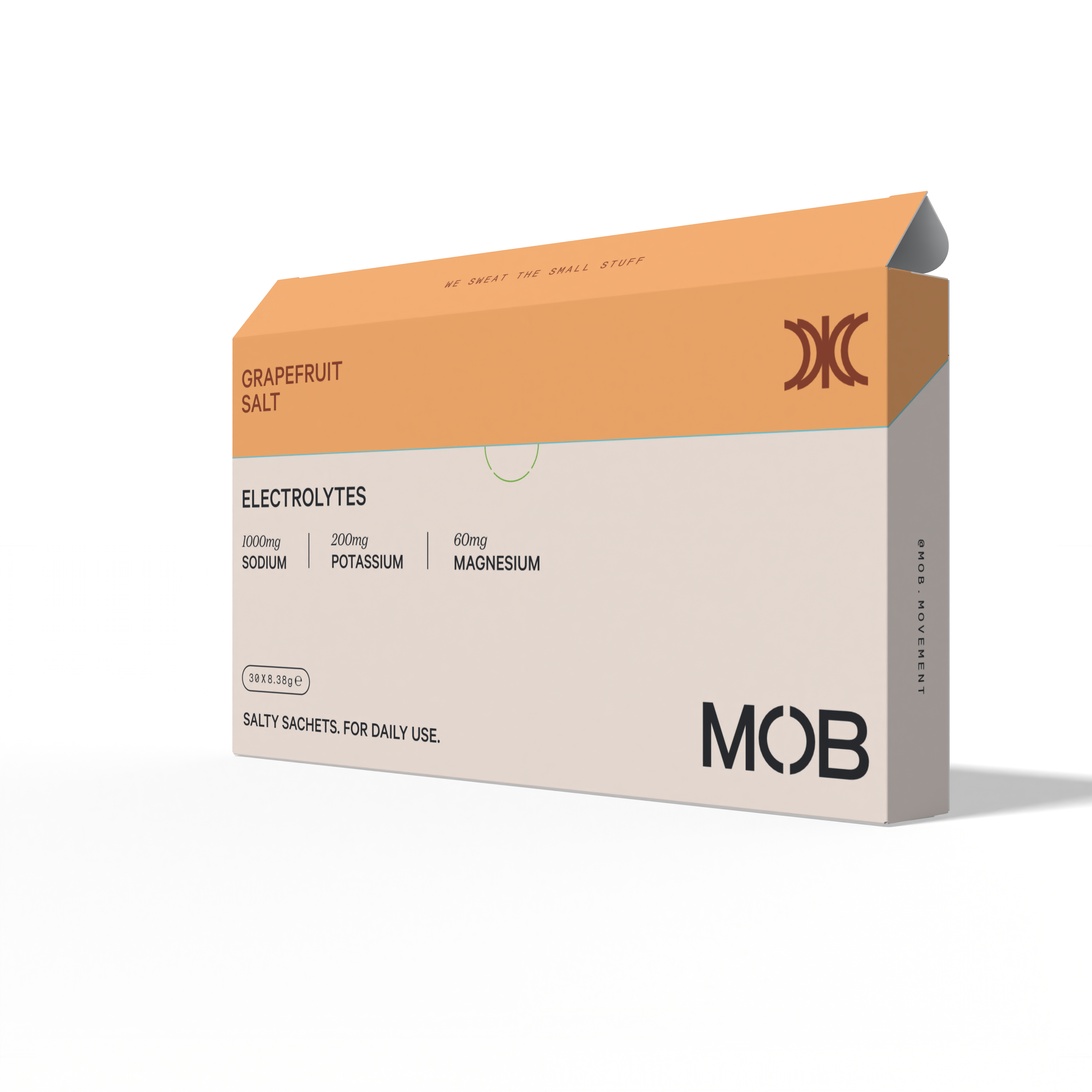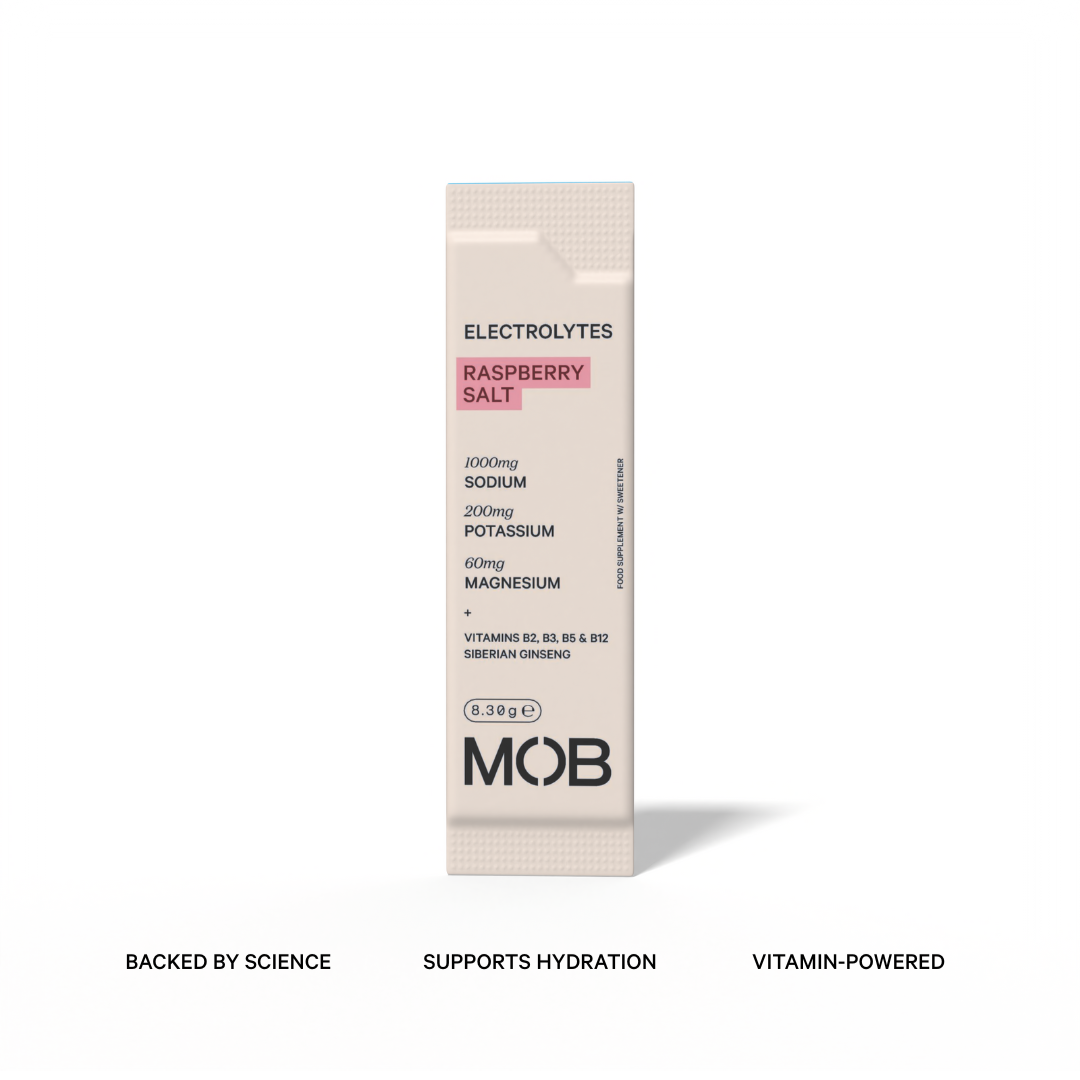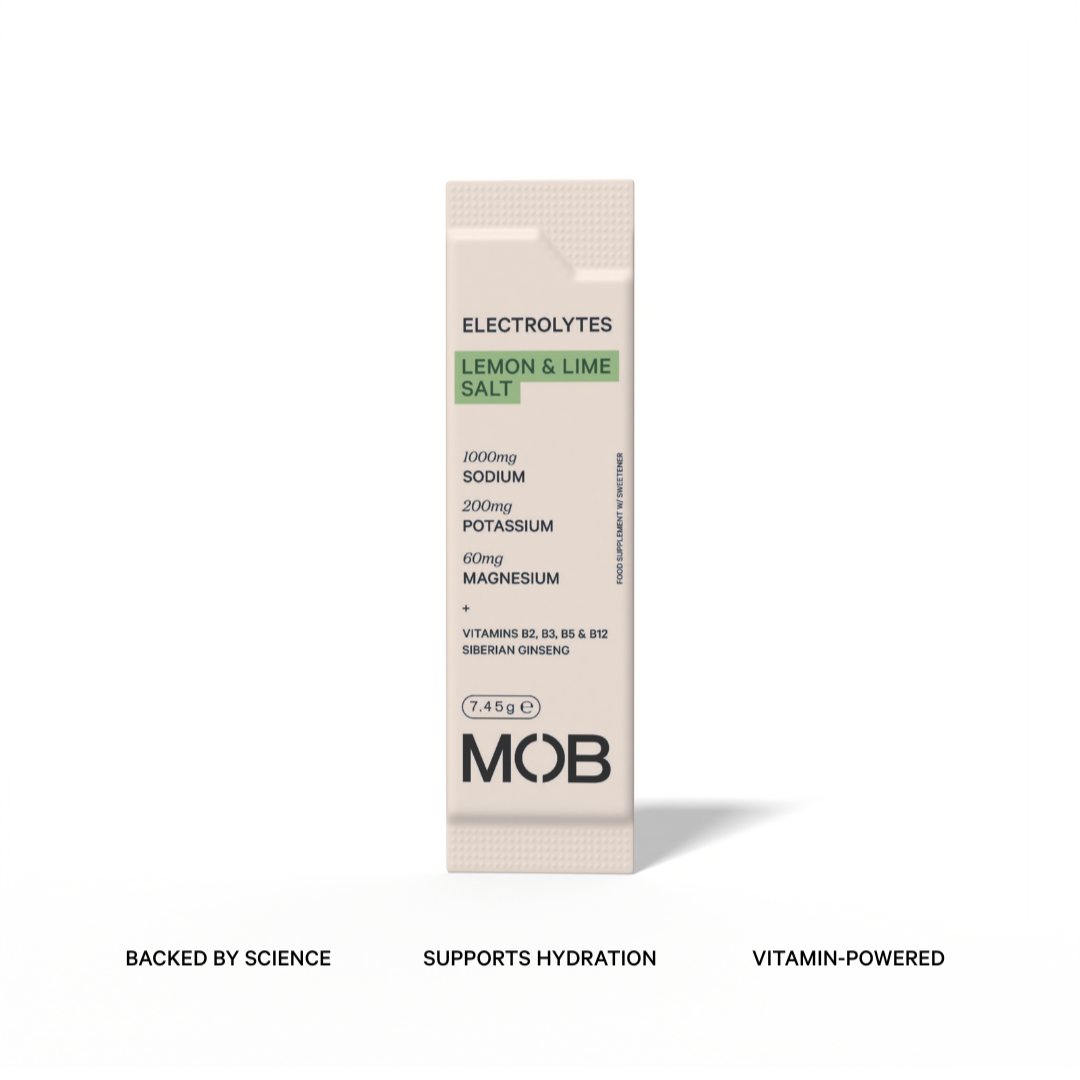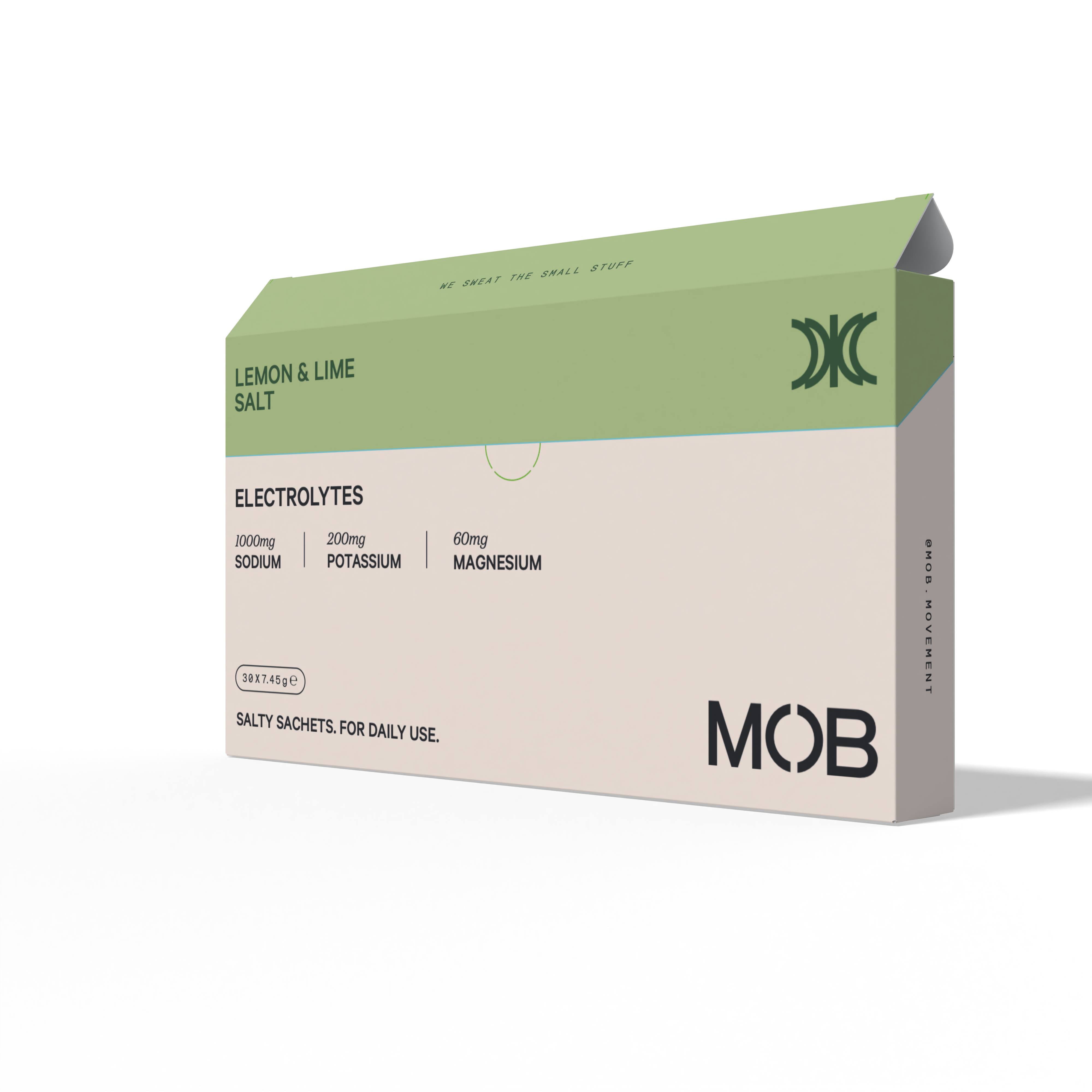Optimising hydration isn’t just about drinking enough water. When your body sweats, whether you're training, under pressure or simply moving through a hot day, it loses more than just fluid. It loses key electrolytes: sodium, potassium, and magnesium. These minerals are essential to performance, recovery, and everyday function.
MOB Electrolytes are formulated with these three minerals in science-backed ratios to help replenish what’s lost through sweat. In this article, we break down what’s actually happening when you sweat, why water alone isn’t enough, and why we’ve chosen to include 1000 mg sodium, 200 mg potassium, and 60 mg magnesium in every sachet.
Sweat Is More Than Water
Sweating is your body’s built-in cooling system. As your core temperature rises, your body releases moisture through sweat glands to regulate it. But that moisture isn’t just water, it’s a carefully balanced mix of minerals.
Sodium, potassium, magnesium, and calcium are all lost in varying amounts when you sweat. The most substantial of these is sodium. Sodium loss ranges from 10 to 90 mmol/L (roughly 220 mg to 2,000 mg per litre of sweat), depending on factors like genetics, fitness level, and heat exposure (Baker).
These minerals are critical to fluid balance, muscle contractions, nerve function, and blood pressure regulation. And unlike fat or carbohydrates, electrolytes aren’t stored in large reserves. Once they’re lost, they need to be replaced.
What Happens When Electrolytes Drop?
Without proper replenishment, symptoms like muscle cramps, headaches, mental fog, nausea, or fatigue can set in. These aren’t just signs of dehydration, they’re often signs of electrolyte imbalance.
One study found that during prolonged endurance activity, sodium losses can exceed 4.5 grams per hour, while potassium levels drop consistently with higher exercise intensities (Holmes et al.). Magnesium loss, while lower in volume, can still meaningfully impact energy production and neuromuscular coordination (Lukaski).
And these issues aren’t limited to athletes. Hot days, stress, and poor sleep can all lead to subtle but meaningful depletion — even if you aren’t drenched in sweat.
Why Water Alone Isn’t Enough
We’re often told to “just drink more water,” but that only addresses half the equation. When you drink water without replacing lost electrolytes — especially sodium — it dilutes what’s left in your bloodstream. This can lead to a condition known as exercise-associated hyponatremia, which in its mild form can leave you feeling flat and bloated, and in severe cases, can be dangerous (Maughan et al.).
In short: water is essential, but on its own, it can’t restore balance.
The Science Behind MOB’s Mineral Ratios
We formulated MOB based on what’s actually lost in sweat, and what your body needs to bounce back.
1000 mg Sodium
Sodium is the most heavily lost electrolyte during training and heat exposure. Our 1000 mg dose reflects the average sodium loss in moderate to heavy sweat conditions, helping maintain plasma volume, muscular endurance, and overall hydration (Baker).
200 mg Potassium
Potassium works alongside sodium to regulate fluid within cells and support normal muscle function. In long-duration or high-intensity activity, potassium loss becomes significant enough to warrant targeted replacement. Our 200 mg dose helps restore balance without overwhelming absorption capacity (Holmes et al.; Sawka et al.).
60 mg Magnesium
Magnesium supports over 300 cellular processes, including ATP production and muscle relaxation. Even small drops can impact neuromuscular efficiency. We include 60 mg per sachet — enough to be effective without causing digestive issues (Lukaski).
The MOB Takeaway
Sweat is your body’s signal that something’s being used, not just expelled. If you’re only replacing water, you’re only doing half the job.
MOB is formulated with a precise balance of sodium, potassium, and magnesium to replenish what your body actually loses. It’s hydration that works harder, so you can too.
Because feeling better isn’t about drinking more. It’s about drinking smarter.
Works Cited
Baker, L. B. “Sweat Sodium Concentration and Sodium Loss in Athletes.” Gatorade Sports Science Institute, 2017. https://www.gssiweb.org/sports-science-exchange/article/sse-161-sweat-testing-methodology-in-the-field-challenges-and-best-practices.
Holmes, Nicola, et al. “The Effect of Exercise Intensity on Sweat Rate and Sweat Sodium and Potassium Losses in Trained Endurance Athletes.” Annals of Sports Medicine and Research, vol. 3, no. 2, 2016, https://doi.org/10.47739/2379-0571/1063.
Lukaski, Henry C. “Magnesium, Zinc, and Chromium Nutrition and Athletic Performance.” Sports Medicine, vol. 10, no. 5, 1990, pp. 303–310. https://doi.org/10.2165/00007256-199010050-00002.
Maughan, R. J., S. M. Shirreffs, and J. B. Leiper. “Errors in the Estimation of Hydration Status from Changes in Body Mass.” British Journal of Sports Medicine, vol. 41, no. 8, 2007, pp. 590–591. https://bjsm.bmj.com/content/41/8/590.
Sawka, Michael N., et al. “Exercise and Fluid Replacement.” Medicine & Science in Sports & Exercise, vol. 39, no. 2, 2007, pp. 377–390. https://doi.org/10.1249/mss.0b013e31802ca597.








